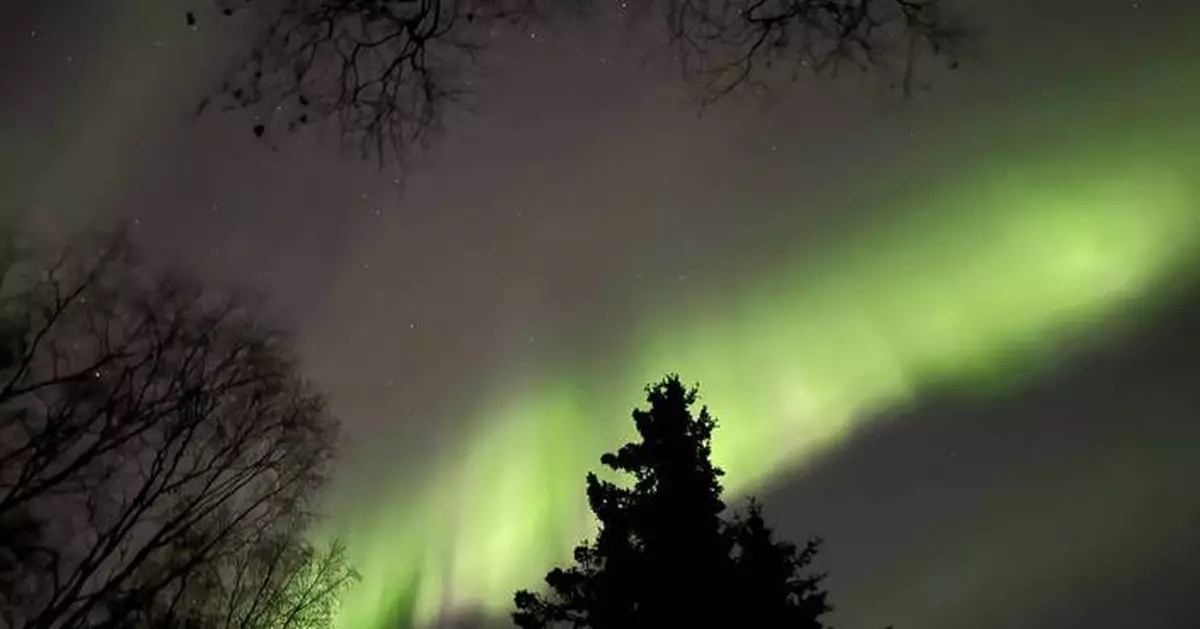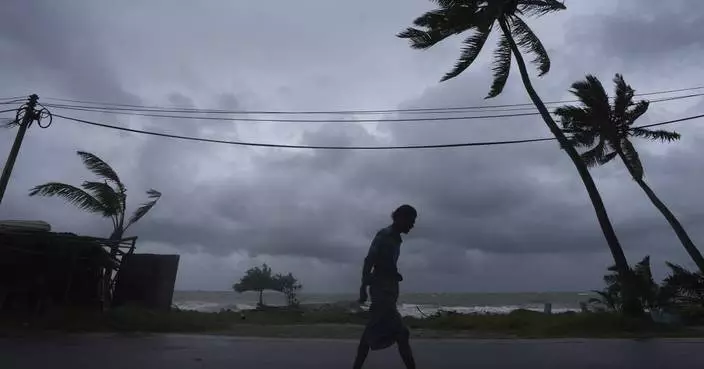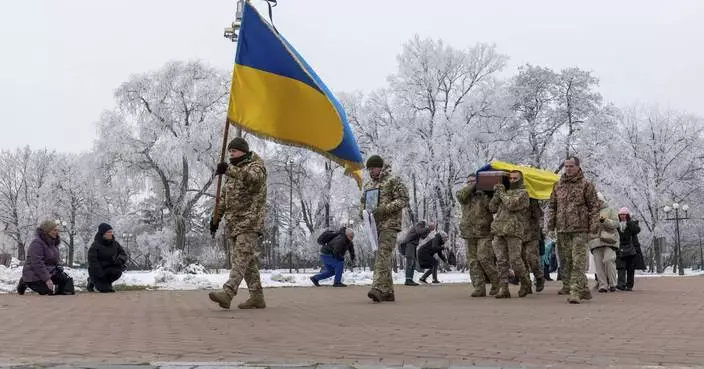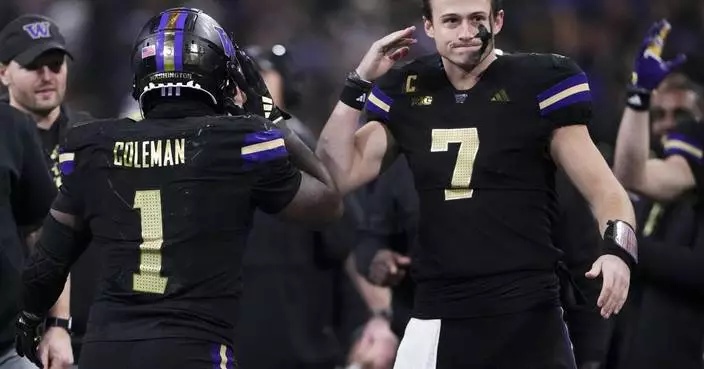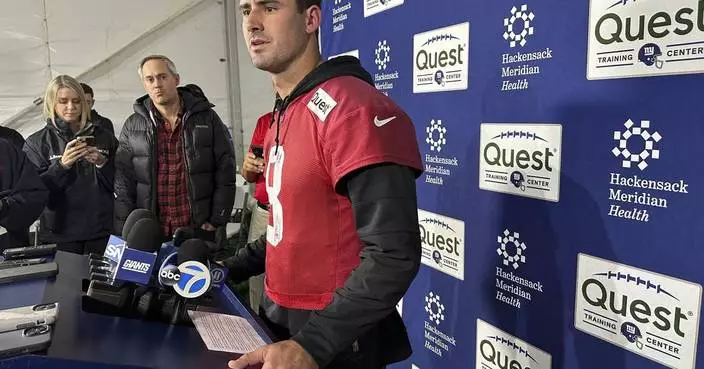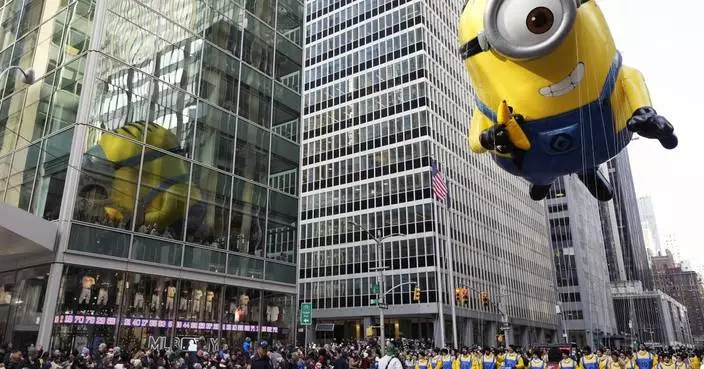NEW YORK (AP) — This Thanksgiving, solar storms may produce faint auroras across the northern rim of the United States.
Pale auroras may be seen across many northern states Thursday and Friday, but they may be brief and and seeing them will depend on how intense the solar storms get, NOAA meteorologist Mike Bettwy said in an email.
Much of the following states are best positioned for potential auroras: Washington, Montana, the Dakotas, Minnesota, Wisconsin, Michigan and Maine. Northern parts of Idaho, Wyoming, New York, Vermont and New Hampshire may also see auroras.
To spy the spectacle, wait for clear skies to get dark and then go outside, ideally away from bright city lights. Taking a picture with a smartphone camera may also reveal hints of the aurora that aren’t visible to the naked eye.
The sun is currently at the maximum phase of its 11-year cycle, making solar surges and northern lights more frequent. Earlier this week, the sun shot a pulse of high-energy plasma towards Earth.
The active period is expected to last for at least another year, though scientists won't know when solar activity peaked until months after the fact, according to NASA and the U.S. National Oceanic and Atmospheric Administration.
Experts don’t expect major communication disruptions from this week's solar storm.
In May, NOAA issued a rare severe geomagnetic storm warning — it was the strongest storm in more than two decades, producing light displays across the Northern Hemisphere. Last month, a powerful solar storm dazzled skygazers far from the Arctic Circle when auroras appeared in unexpected places, including Germany, the United Kingdom, New England and New York City.
—-
The Associated Press Health and Science Department receives support from the Howard Hughes Medical Institute’s Science and Educational Media Group. The AP is solely responsible for all content.

FILE - An aurora borealis, also known as the northern lights, is seen in the night sky on Thursday, Oct. 10, 2024, in Moscow, Idaho. (AP Photo/Ted S. Warren, File)

FILE - An aurora borealis, also known as the northern lights, makes an appearance over pumpjacks as they draw out oil and gas from well heads near Cremona, Alberta, Thursday, Oct. 10, 2024. (Jeff McIntosh/The Canadian Press via AP, File)
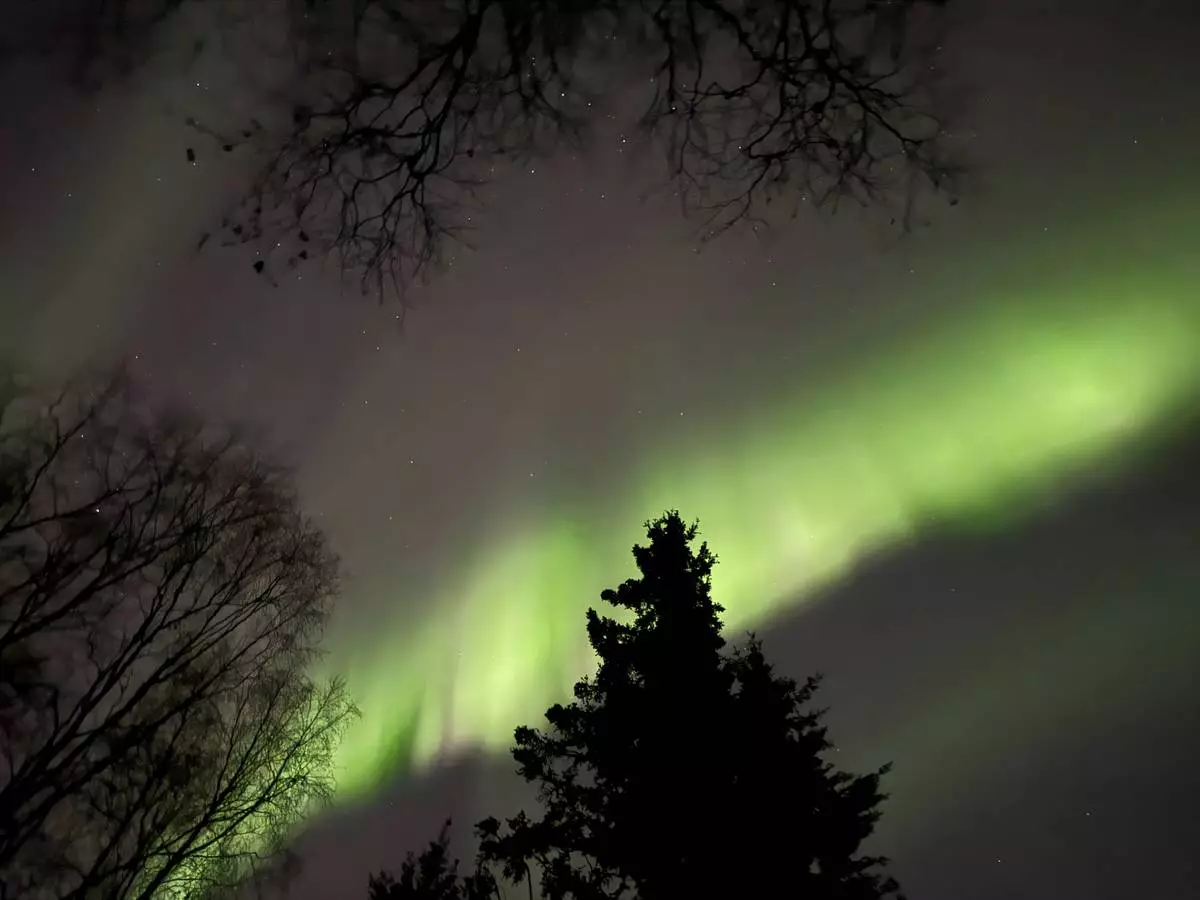
FILE - The northern lights appear over Anchorage, Alaska, early the morning of Friday, Oct.. 11, 2024. (AP Photo/Mark Thiessen, File)
NEW YORK (AP) — Likely most people have seen iconic footage of the Beatles performing on “The Ed Sullivan Show.” But how many have seen Paul McCartney during that same U.S. trip feeding seagulls off his hotel balcony?
That moment — as well as George Harrison and John Lennon goofing around by exchanging their jackets — are part of the Disney+ documentary "Beatles ’64," an intimate look at the English band's first trip to America that uses rare and newly restored footage. It streams Friday.
“It’s so fun to be the fly on the wall in those really intimate moments,” says Margaret Bodde, who produced alongside Martin Scorsese. “It’s just this incredible gift of time and technology to be able to see it now with the decades of time stripped away so that you really feel like you’re there.”
“Beatles ’64” leans into footage of the 14-day trip filmed by documentarians Albert and David Maysles, who left behind 11 hours of the Fab Four goofing around in New York's Plaza hotel or traveling. It was restored by Park Road Post in New Zealand.
“It’s beautiful, although it’s black and white and it’s not widescreen,” says director David Tedeschi. “It’s like it was shot yesterday and it captures the youth of the four Beatles and the fans.”
The footage is augmented by interviews with the two surviving members of the band and people whose lives were impacted, including some of the women who as teens stood outside their hotel hoping to catch a glimpse of the Beatles.
“It was like a crazy love,” fan Vickie Brenna-Costa recalls in the documentary. “I can’t really understand it now. But then, it was natural.”
The film shows the four heartthrobs flirting and dancing at the Peppermint Lounge disco, Harrison noodling with a Woody Guthrie riff on his guitar and tells the story of Ronnie Spector sneaking the band out a hotel back exit and up to Harlem to eat barbeque.
The documentary coincides with the release of a box set of vinyl albums collecting the band’s seven U.S. albums released in ’64 and early ’65 — “Meet The Beatles!,” “The Beatles’ Second Album,” “A Hard Day’s Night” (the movie soundtrack), ”Something New,” “The Beatles’ Story,” “Beatles ’65” and “The Early Beatles.” They had been out of print on vinyl since 1995.
The Beatles' U.S. visit in 1964 also included concerts at Carnegie Hall, a gig at the Washington Coliseum in Washington, D.C., and a visit to Miami, where the band met Muhammad Ali. The documentary shows members of the band reading newspaper coverage of themselves.
Viewers may learn that the Beatles — now revered — were often met with ridicule or rudeness from the older generation. At the British Embassy in New York, the four were treated as lower class, while renowned broadcaster Eric Sevareid, doing a piece for CBS, compared the reaction to the Beatles to the German measles.
“You’re nothing but four Elvis Presleys,” one reporter told them during a press conference, to which the boys good-naturedly started gyrating as Ringo Starr screamed ”It’s not true!”
“Why the establishment was against them is sort of a mystery to me,” says Tedeschi. “I think older people believed that music would go back to the big bands.”
Musicians like Sananda Maitreya, Ron Isley and Smokey Robinson also discuss the Fab Four and what they took from Black music. There also are interviews with residents of Harlem, critic Joe Queennan and filmmaker David Lynch, who saw the Beatles play the Washington Coliseum.
“Beatles ’64” tries to explain why young people were so besotted by John, Paul, George and Ringo. Their visit came just months after the assassination of President John. F. Kennedy and Tedeschi argues Beatlemania was a salve for a nation in mourning.
“Part of it is I think that the light was just off. They were depressed. Everything was dark. And ‘I Want to Hold Your Hand’ lit them up,” says Tedeschi.
As McCartney says in the documentary: “Maybe America needed something like the Beatles to lift it out of mourning and just sort of say ‘Life goes on.’”

A box set collection of the first seven Beatles albums is displayed. (Disney+ Beatles via AP)
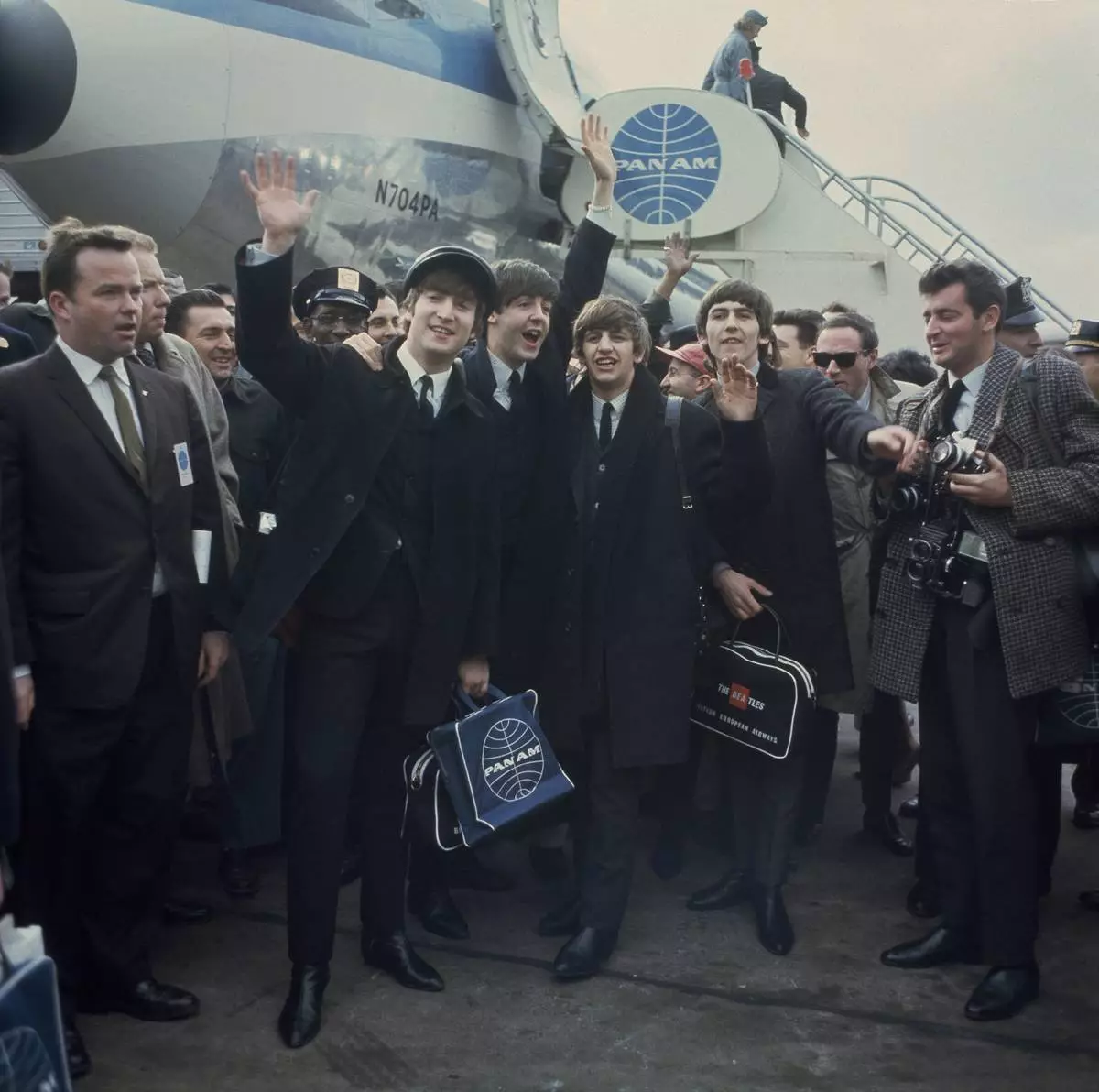
FILE - The Beatles, from left, John Lennon, Paul McCartney, Ringo Starr and George Harrison, arrive at John F. Kennedy International Airport in New York, on Feb. 7, 1964. (AP Photo, File)





